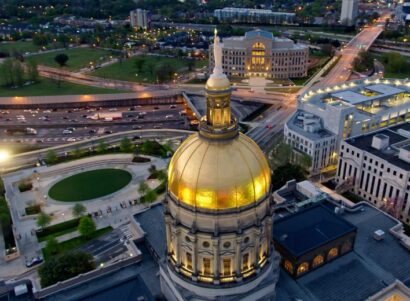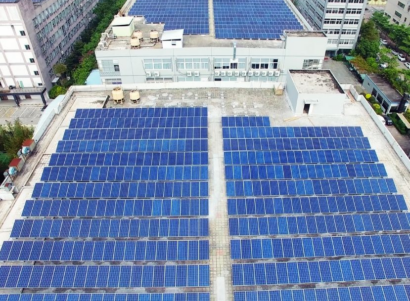Last week, New Jersey transitioned to a new administration committed to ambitious clean energy goals. A Democratic governor replaced a Republican administration that had pulled the state out of the Regional Greenhouse Gas Initiative (RGGI) in 2011, emphasized natural gas, and downplayed climate change. The new governor’s progressive energy agenda has broad support among New Jersey residents and will be backed by a Democrat-controlled state legislature. This is a rare opportunity to set New Jersey on a path to clean energy and efficiency, rejoin RGGI, and transform the state into a regional leader in sustainable energy.
A transition from fossil fuels to clean energy will benefit New Jersey’s economy, reduce air pollution, and help combat climate change. From a global perspective, clean-energy choices must be made now. A recent article in the journal Nature warned that if global greenhouse gas emissions continue to rise past 2020, the Paris agreement’s temperature goals will become virtually unattainable.
In our report, “A Clean Energy Pathway for New Jersey,” prepared last September for the New Jersey Conservation Foundation and ReThink Energy NJ, we laid out a pathway to cut the Garden State’s power-sector emissions in half by expanding efficiency while continuing the current levels of solar growth and tapping the vast potential for offshore wind generation. By 2030, 33% of New Jersey’s electricity could come from in-state renewable resources. The clean-energy pathway is both achievable and affordable — in fact, it costs no more than the current business-as-usual trajectory.
The key to success lies in two magic words: energy efficiency. In order to make New Jersey’s clean-energy pathway affordable, the state will need to ensure annual energy savings of at least 2% per year, our calculations show. Energy-efficiency programs across the U.S. have already shown that 2% savings per year can be readily achieved. We suggested a three-pronged approach: implementing new policies proven to successfully incentivize efficiency; guaranteeing a substantial increase in energy-efficiency funding; and reorganizing the current efficiency-program administration. New Jersey also needs to ensure that energy efficiency reaches the lowest-income communities.
Why focus on efficiency? The cheapest kilowatt-hour is the saved kilowatt-hour. Energy savings also reduce peak demand, which is normally met by deploying fast-ramping but inefficient peaker power plants, making wholesale power prices highest for all users during peak hours. Efficiency measures cost between 3 and 4 cents per kilowatt-hour (including both program and customer costs) — cheaper than the wholesale price of any electricity generation source. In addition, when customers save energy, they deliver savings to the entire power system by avoiding high-cost peak power generation along with power losses that occur in transmission and distribution lines. Equally important are benefits to the community from improved air quality and reduced greenhouse gas emissions due to displacing fossil fuels; increased local employment opportunities; and avoided or deferred investments in new energy infrastructure.
An energy efficiency savings goal of 2% per year is realistic and achievable — many states in the Northeast (Massachusetts, Rhode Island, Vermont, Maine, Connecticut) have sustained similar or even higher savings rates over the past few years, with Massachusetts and Rhode Island now pushing 3%. New Jersey, however, achieved only 0.44% savings in 2016, ranking 30th among all states on this measure, just behind Kentucky. What can New Jersey do to catch up with the top-tier energy-efficient states?
An energy efficiency pathway for New Jersey
New Jersey can start off by setting the binding 2% efficiency target and securing adequate and continual funding for the effort. In our report, we recommended a baseline market assessment and energy efficiency resource-potential study to identify the highest-impact and lowest-cost measures. Studies like this have successfully provided guidance in many places, including New Jersey.
But knowing what needs to be done and actually doing it in a cost-effective manner are two separate things. To get there, New Jersey may also need to fundamentally restructure its energy efficiency program administration and enact new policies to clearly identify the obligated parties and build a foundation for market transformation.
The bar chart above shows the top 25 states as ranked in the 2017 American Council on Energy-Efficient Economy (ACEEE) Efficiency State Scorecard in six main scoring categories. New Jersey has less than half the overall points of the leading states and misses the most points in the highest scoring category, “Utility and public benefits programs and policies.” There are four main reasons for this: low energy savings achieved, low efficiency-progr
The last reason is very important: even if New Jersey adopts a 2% annual savings target and substantially increases program spending, it may still end up short of the 2% goal without effective policies and regulatory mechanisms.
















